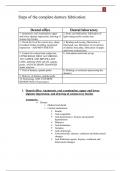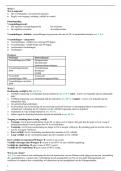Summary
Summary Research Methods: Key Terminology
- Institution
- Coventry University (West Midlands) (CU)
Basic summary on quantitative and qualitative research terms and designs. - notes are in the form of bullet-points (simple and concise notes) - includes multiple-choice question examples (*relevant to the multiple-choice test for 4007PY students)
[Show more]





